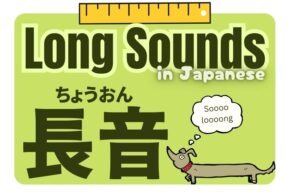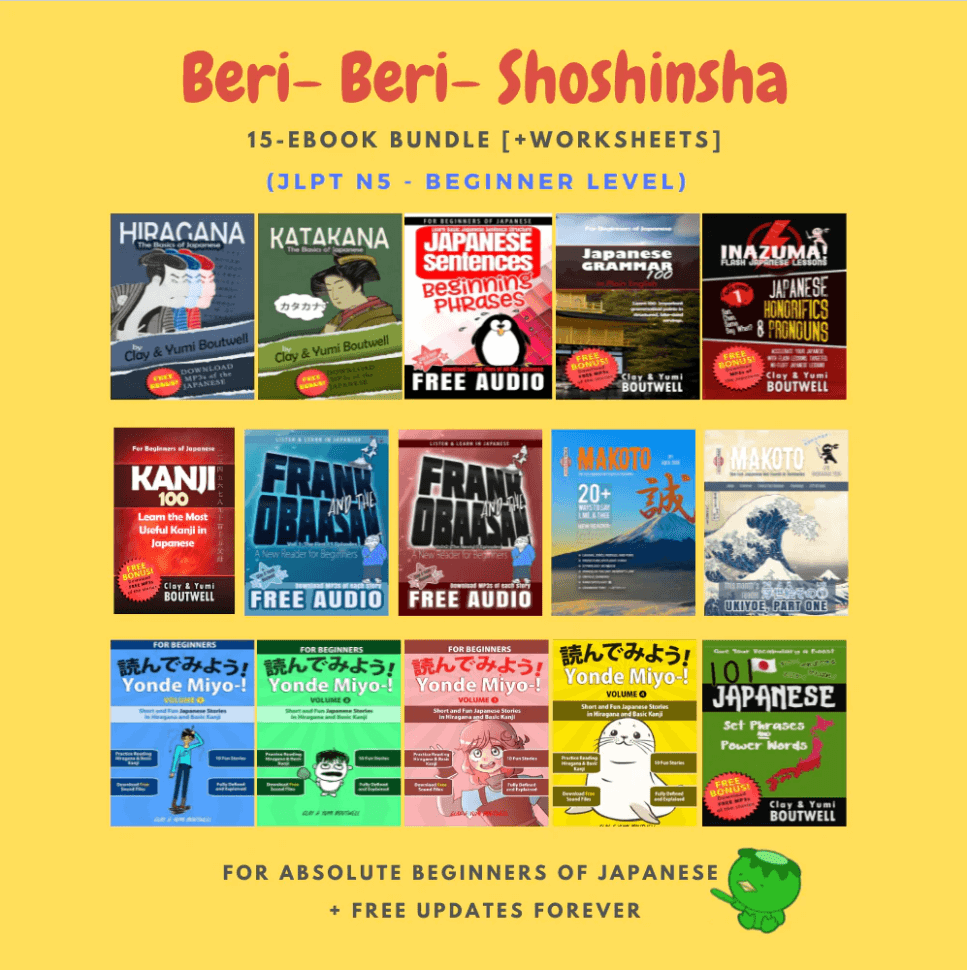Quick! What's the difference between these two words?
おばさん
おばあさん
Calling a middle-aged lady, 「おばあさん」 will most likely be seen as an insult.
Calling an older, grandmotherly lady, 「おばさん」 will most likely be seen as a compliment.*

* It's best not to do either until you know the lady and she invites you to call her 「おばあさん」 or 「おばさん」 .
長音 Long Vowels
Many Japanese words have long vowels. This is called:
長音
chou on
The word, 長音, itself has a 長音 sound. (Sorry, couldn't resist.) The う u sound makes the ちょ long. ちょうおん
- The long vowels do not add syllables: ちょ and ちょう are both one syllable.
- But with Japanese, it is better to think in terms of "mora" instead of syllables.
A mora basically represents a single kana. The kana with a small やゆよ and the small っ count as one mora. You can think of it as lasting one beat.
For example, 東京 (Tokyo) in the Japanese pronunciation (listen below) is two syllables (Tou / kyou) but it is four mora: と - う - きょ - う. So, it lasts four beats.
Listen to the pronunciation of とうきょう. It has two syllables, but four mora.
Likewise, 長音 is two syllables but four mora. It is pronounced as four beats: ちょ - う - お - ん.
Thinking in terms of beats (one beat for each mora (or kana)) will greatly help your Japanese pronunciation.
Listen to the difference:
ちょ
1 beat (1 mora)
ちょう
2 beats (2 mora)
- As a result, the vowel sound, usually, will sound the same, just held longer.
- The long vowels are about twice as long as a short vowel. (Two beats instead of one.)
Rules for making longer sounds with Hiragana
For the most part, the following makes sense. The same vowel sound is pronounced twice as long and written with the hiragana that that sound represents. The last two, え and お, have a variation in the written form, however.
- For sounds ending in an あ a sound, add an あ:
おばさん (aunt) → おばあさん (grandmother)
おばさん
おばあさん
- For sounds ending in an い i sound, add an い after it:
おじさん (uncle) → おじいさん (grandfather)
おじさん
おじいさん
- For sounds ending in a う u sound, add an う:
くこ (Chinese wolfberry 枸杞) → くうこう (airport 空港)
くこ
くうこう
- For sounds ending in a え e sound, add either an え or い. While this can be confusing, just memorize which one as you learn vocabulary words.
おねえさん (older sister; young lady お姉さん)
へいき (calmness 平気 -or- military arms and weapons 兵器)
おねえさん
へいき
- For sounds ending in a お o sound, add either an お or an う. As with the え sound, you will just have to memorize these words. However, most of them use う.
おき (open sea; okinawa 沖) → おおきい (big 大きい; notice this has two long vowels. お for the お sound and い for the き sound)
とき (time 時) → とうき (porcelain; china 陶器)
おき
とき
おおきい
とうき
Rules for making longer sounds with Katakana
This is much easier than hiragana. Instead of adding another vowel, simply add a dash after it. ー
コーヒー coffee
アパート apartment
バター butter
Want more?
If you are a beginner (total or the kind of beginner who can't seem to leave the beginner stage), we have a huge but inexpensive digital bundle just for you.
It's called Beri- Beri- Shoshinsha. It not only covers the total basics (kana, grammar, and essential vocabulary), but also includes dozens of short, curated stories to help you improve your reading, understanding, and vocabulary.







I agree, this was a great lesson. Thank you Clay. Can I suggest a follow-up? i have struggled with imagining (and vocalising) the up-down guidance on pronounciation (as in おばさん and おばあさん) for years. A lesson on how these work would invaluable. If there are any tips on the patterns and how to recognize them (eg おばあさん is same as おじいさん (?) ) that would be even better.
PS If anybody is interested recently found the Yomiwa dictionary app gives the pronounciation visually and with sound.
Thanks! You mean the pitch accents, right? I wrote a brief introduction here:
https://makotoplus.com/the-makoto-letter-8-pitch-accents/
(It’s free for non-members too)
There are some vague rules that help guess the pitch accent, but the many exceptions make it difficult. In the end, you just need to learn the pitch accent as you learn vocabulary (in the above page, I explain how to easily look it up for free using Yomichan and Jisho.org–your app would be fine too). One tip would be if you aren’t sure, pronounce it as Heiban (flat or “start low and then go slightly higher”). Most words are Heiban.
You are right おばあさん is the same as おじいさん. Both go up on the second kana and then go down on the third: oBAasan and oJIisan LHLLL
I’ll add more pitch accent diagrams to this page for you. 🙂
Thank you Clay. I shall go through this now.
Very helpful – but Clay Sensei, what is the difference between a “syllable” and a “beat” in this context?
My analogy isn’t perfect, but think of a singer holding a note for two beats. That may be considered a single syllable, but it is two beats (or moras).
One way that might help is to clap as you say a Japanese word. Each kana (including the small っ) should be one clap. If you do that, you’ll see がっこう is four claps (beats or moras) even though it sounds like 2 syllables to the English ear.
I guess my main point here is we are used to thinking in syllables, but we really need to think in kana — 1 kana = 1 mora/beat
Please assist me with a short :excuse me, Kaori Sensei (karori Kobayashi the famous Musician from Japan) but did I write something that offended you? I miss your facebook posts and they stopped that day I wrote to you.”
This was an outstanding presentation of the subtleties of the Japanese language.
Thank you! I’m glad it helped.